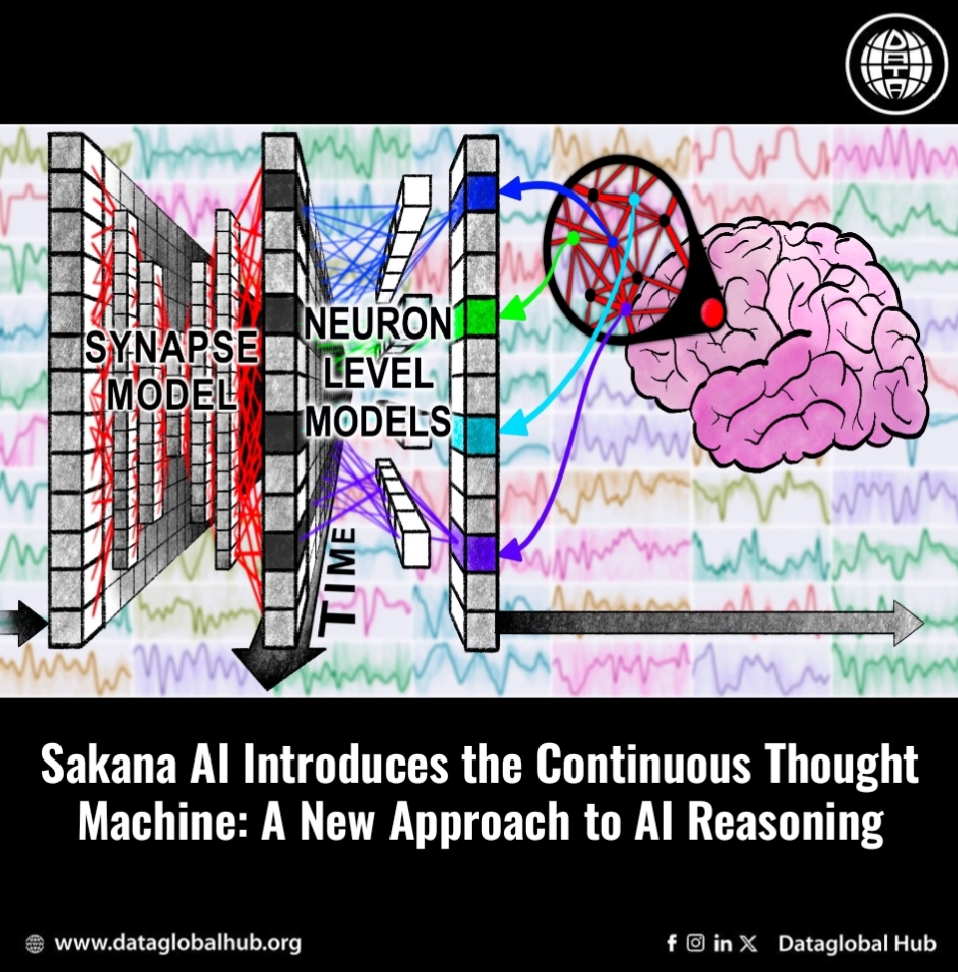
Sakana AI Introduces the Continuous Thought Machine: A New Approach to AI Reasoning
Translate this article
Artificial intelligence continues to advance, and researchers are exploring new ways to make machines process information more like humans. Sakana AI has introduced the Continuous Thought Machine (CTM), a new type of artificial neural network that incorporates the concept of time to enhance its problem-solving abilities. By drawing inspiration from the way biological brains synchronize neuron activity, the CTM offers a more transparent and human-like approach to tasks like maze solving and image recognition. This innovation provides a fresh perspective on how AI can tackle complex challenges with clarity and efficiency.
How the Continuous Thought Machine Works
The CTM differs from traditional AI models by focusing on the timing of neuron activity, a feature often overlooked in conventional neural networks. Most AI systems today use simplified neuron models from the 1980s, which prioritize a neuron’s output but ignore when it fires relative to others. The CTM, however, allows neurons to access their own past behavior and coordinate through synchronization, mimicking processes found in biological brains. This enables the model to exhibit more complex and dynamic behavior, resulting in a reasoning process that unfolds step-by-step.
This step-by-step approach makes the CTM’s decisions easier to understand. Unlike many AI systems that deliver answers instantly, the CTM “thinks” through problems in a way that resembles human deliberation. This transparency is valuable for researchers and developers seeking to better understand and refine AI behavior.
Demonstrating Human-Like Problem Solving
Sakana AI tested the CTM on a variety of tasks, with two examples "maze solving and image recognition" illustrating its distinctive capabilities.
Solving Mazes with Clear Reasoning
In the maze-solving task, the CTM is given a 2D top-down maze and must determine the steps to navigate it. Rather than producing an immediate solution, the model examines the maze step-by-step, focusing on different sections as it plans its path. Visualizations of the CTM’s attention patterns reveal it tracing the maze’s routes, closely resembling how a human might approach the puzzle. Notably, this behavior wasn’t explicitly programmed—it emerged naturally from the model’s design. When given additional time, the CTM continues to refine its path, indicating it has developed a general understanding of maze navigation.
Analyzing Images with Deliberate Focus
For image recognition, the CTM was tested on the ImageNet dataset, a standard benchmark for classifying objects in photos. Unlike traditional systems that process images in a single step, the CTM examines different parts of an image over multiple steps, focusing on features like an animal’s eyes, nose, or mouth. This deliberate process improves accuracy and aligns with how humans visually scan objects. For simpler images, the CTM requires less processing time, which enhances efficiency. The model’s attention patterns provide insight into which features it prioritizes, offering a clear view of its reasoning process.
These examples highlight the CTM’s ability to approach tasks in a way that is both intuitive and transparent, making it easier to understand how it arrives at its conclusions.
Connecting AI with Biological Inspiration
The CTM reflects Sakana AI’s interest in drawing from nature to advance AI. While modern AI models are inspired by the brain, they remain far simpler than biological neural networks. Neuroscience often focuses on understanding the brain rather than building practical AI systems. The CTM bridges this gap by incorporating a brain-inspired feature—neuron synchronization—while remaining functional for real-world applications.
The CTM’s neurons exhibit varied behaviors, such as oscillating at different frequencies, which resemble patterns seen in biological brains. These behaviors emerged naturally as the model learned to solve tasks, rather than being explicitly designed. This suggests that incorporating biological principles could lead to more capable and efficient AI systems, building on the progress made since the deep learning advancements of 2012.
Why the CTM Matters
The Continuous Thought Machine offers a new way to approach AI development, emphasizing transparency and efficiency. Its interpretable reasoning process could make it easier to trust and improve AI systems, addressing challenges like identifying biases or errors. The model’s ability to adjust its processing time based on task complexity also points to potential applications in environments where energy efficiency is critical, such as mobile devices or large-scale computing systems.
For those interested in AI and neuroscience, the CTM provides an opportunity to explore the intersection of these fields. Sakana AI has shared its work through an Interactive Report, a technical report, and released code, encouraging further exploration and collaboration.
Looking to the Future
The Continuous Thought Machine represents a meaningful step in developing AI that aligns more closely with human cognition. As Sakana AI continues to explore nature-inspired approaches, the CTM demonstrates the potential of combining biological insights with computational techniques. Whether navigating mazes, classifying images, or addressing new challenges, the CTM’s transparent and thoughtful approach could inspire future advancements in AI.
To learn more, visit Sakana AI’s Interactive Report for interactive examples of the CTM in action, or consult the technical report for a detailed look at its architecture. As researchers and enthusiasts delve into this promising area, the CTM invites us to consider how biology and technology can work together to create smarter, more understandable AI systems.
About the Author

omar ali
Recent Articles
Subscribe to Newsletter
Enter your email address to register to our newsletter subscription!